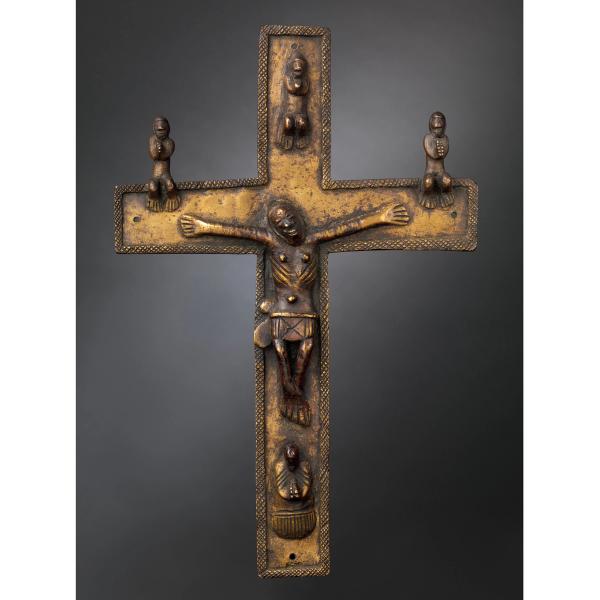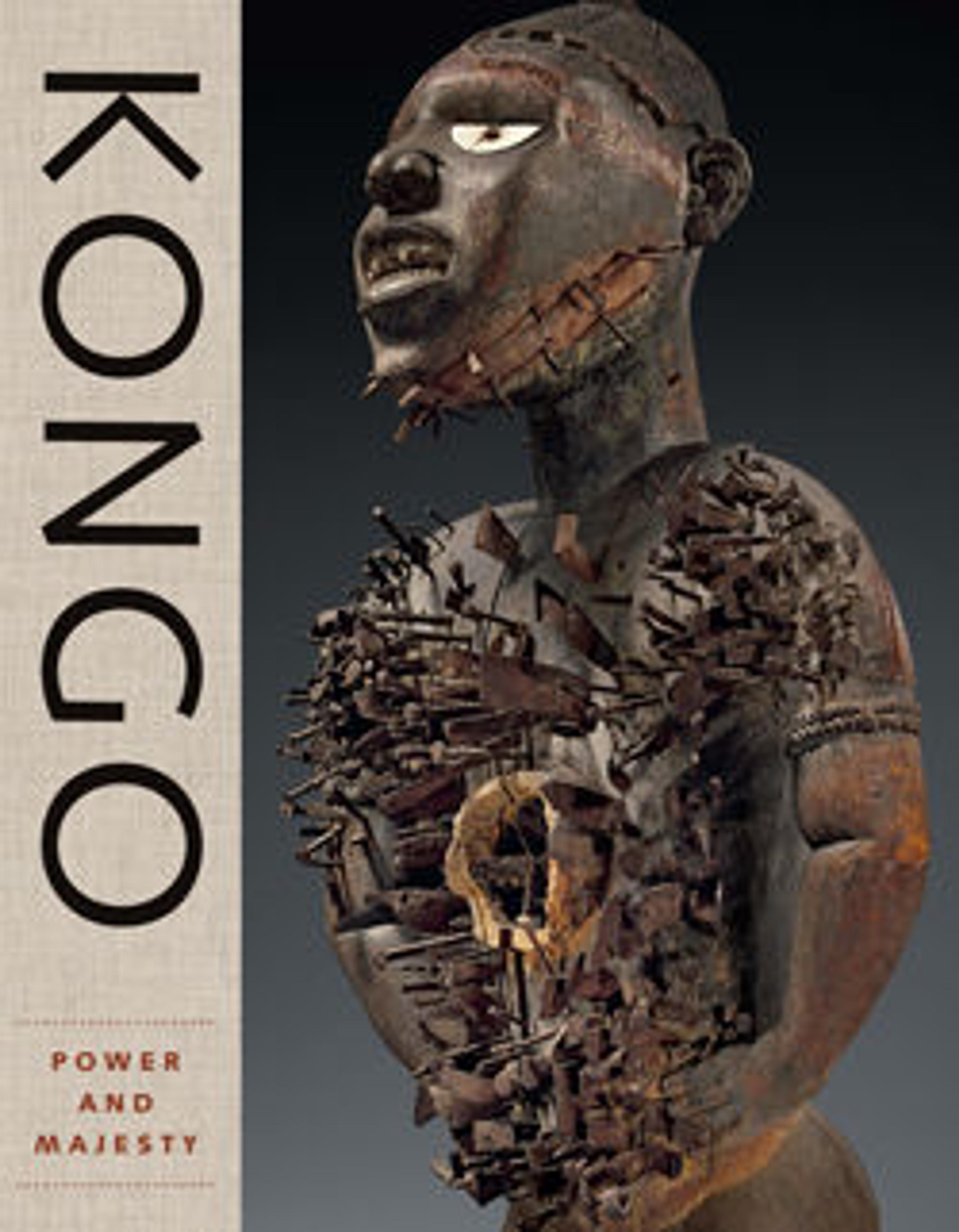Crucifix
The Kongo designer of this prestige piece significantly transformed the Western prototype that served as its model. At the center of a flat cruciform, a Christ figure with African features and broad, flattened feet and hands was cast in relief, arms extended. The abstract modeling of four smaller figures whose hands are clasped in prayer contrasts with the more expressionistic treatment of Christ. His torso is given definition by the incised ribs, raised nipples and navel, and wrapper around his pelvis. While the suppliants depicted at the apex and base kneel, the two others sit comfortably on the top edge of either arm of the cross.
Artwork Details
- Title: Crucifix
- Artist: Kongo artist
- Date: 16th–17th century
- Geography: Democratic Republic of the Congo; Republic of the Congo; Angola
- Culture: Kongo
- Medium: Solid cast brass
- Dimensions: H. 10 3/4 × W. 7 × D. 3/4 in. (27.3 × 17.8 × 1.9 cm)
- Classification: Metal-Sculpture
- Credit Line: Gift of Ernst Anspach, 1999
- Object Number: 1999.295.7
- Curatorial Department: The Michael C. Rockefeller Wing
Audio

1546. Crucifix, Kongo artist
Cécile Fromont
CÉCILE FROMONT: We are looking at a quintessential, beautiful Kongo crucifix that is made of brass and includes a set of characters that are really typical of the Kongo and its version of Christianity.
I am Cécile Fromont, and I'm a professor of the History of Art and Architecture.
ANGELIQUE KIDJO (NARRATOR): Christianity arrived in the Kingdom of Kongo along with the Portuguese in the late fifteenth century. The king embraced this new religion, tying Christianity to the political and elite classes while others continued to practice their indigenous spirituality. This resulted in a blend of the two in the material culture, such as you see in this crucifix.
CÉCILE FROMONT: There is, of course, at the center the body of Christ. He is surrounded by four figures that have their hands joined together. My interpretation of them is that they are figures trespassing between the realm of the living and the realm of the dead. So they’re suggesting perhaps ancestors who have been dead and are crossing between life and death.
At the bottom is a figure of the Virgin. And she has textiles wrapped around her represented with some lines on her shoulders and skirt. And that is referring to the kind of textile that would be wrapped around bodies of dead important people. So this crucifix is also a funerary bundle and what is inside has trespassed and what is outside is still in the realm of the living.
ANGELIQUE KIDJO: As Fromont noted, Kongo practitioners undertook a customization of Christianity.
CÉCILE FROMONT: We have interesting descriptions of missionaries discussing things like how to translate heaven or hell, which are very much about that other side of what happens when you’re not in the visible world. And their Kongo interlocutors are pushing against the idea of the Christian afterlife, where they’re asking the missionaries, ‘Well, how do you know about hell? It’s ridiculous. That is not what the other life is. The other life is more likely than not the same as here, but on the other side and then you’ll come back.’
More Artwork
Research Resources
The Met provides unparalleled resources for research and welcomes an international community of students and scholars. The Met's Open Access API is where creators and researchers can connect to the The Met collection. Open Access data and public domain images are available for unrestricted commercial and noncommercial use without permission or fee.
To request images under copyright and other restrictions, please use this Image Request form.
Feedback
We continue to research and examine historical and cultural context for objects in The Met collection. If you have comments or questions about this object record, please contact us using the form below. The Museum looks forward to receiving your comments.
